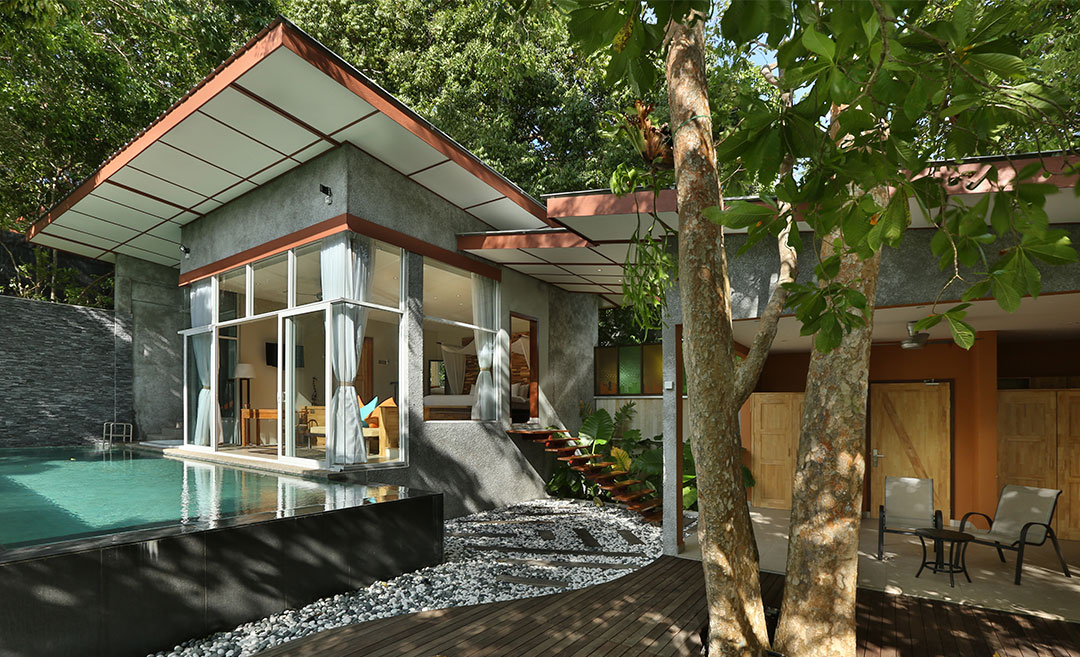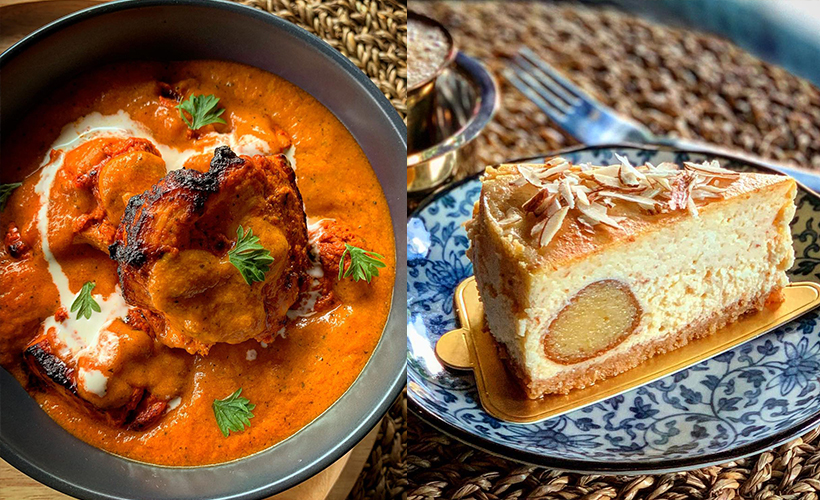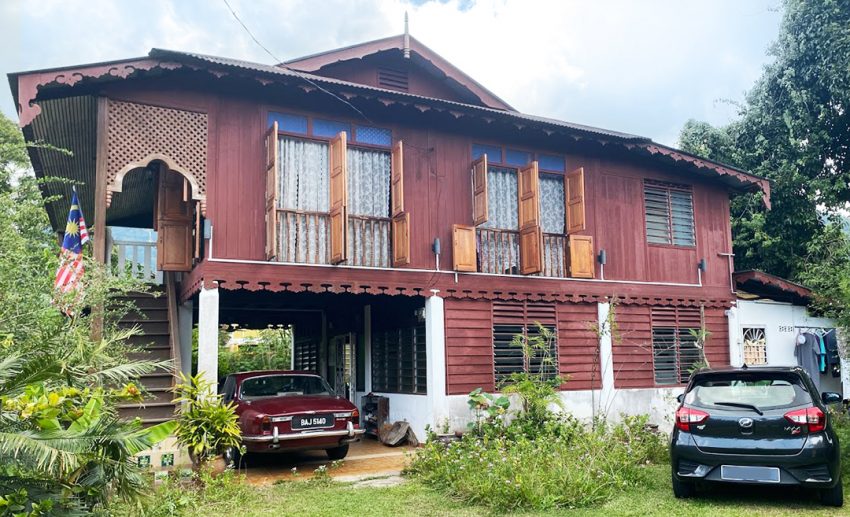
Images by Xin Lee
“Where’s Lenggong?” I wondered as I perused an email inviting Zafigo to experience a stay at Rumah Tiang 16 in Lenggong, Perak. A quick Google search told me that Lenggong is a small town in the state of Perak, 90 minutes north of Ipoh, and a mere 126 kilometres from the Malaysia-Thailand border. Situated in the Lenggong Valley, Lenggong is one of Peninsular Malaysia’s most important archaeological sites, making it a UNESCO World Heritage site. Immediately, my interest was piqued.
The email was sent by Nasir Jalaludin, the owner and host of Rumah Tiang 16, a B&B located in Lenggong itself. Along with his invitation, Nasir – or Nash as we would later know to call him – explained how he wanted to promote Lenggong as a tourist destination through a community-immersion experience. Along with his email, he attached an itinerary which mentioned archaeological sites and museum visits, a backwater cruise, a cave tour, a forest walk, and lots of authentic traditional Malay gastronomy. I was sold! I replied to Nash’s email and accepted his invitation. We locked in our dates, and soon enough, the day to visit Lenggong came.
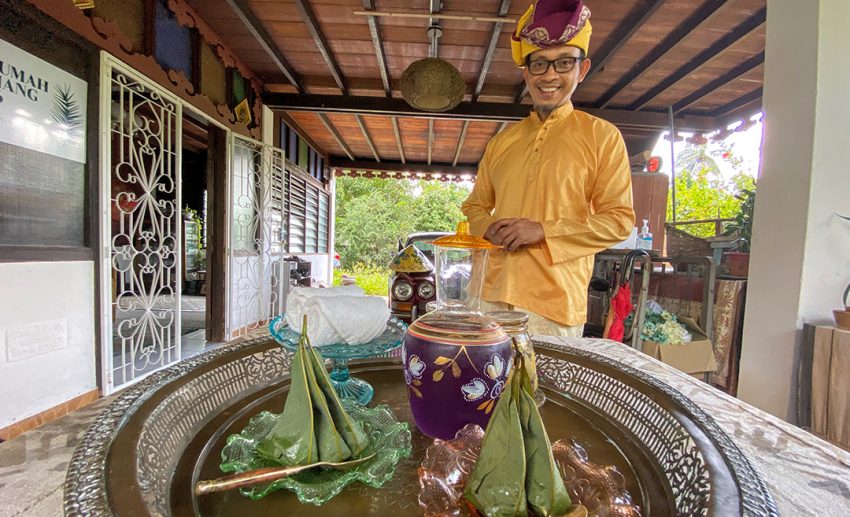
I set off on the three-hour drive with my colleague Xin (also my favourite work travel buddy), and we pulled up to Rumah Tiang 16’s driveway at a little past noon. We alighted the car and took in the regal-looking, traditional wooden house on stilts before us. Nash, dressed in traditional Malay garb, was standing out front holding a tray to perform a traditional Malay welcome ritual. Soon after, Nash proceeded to give us a brief history of Rumah Tiang 16.
How it all began
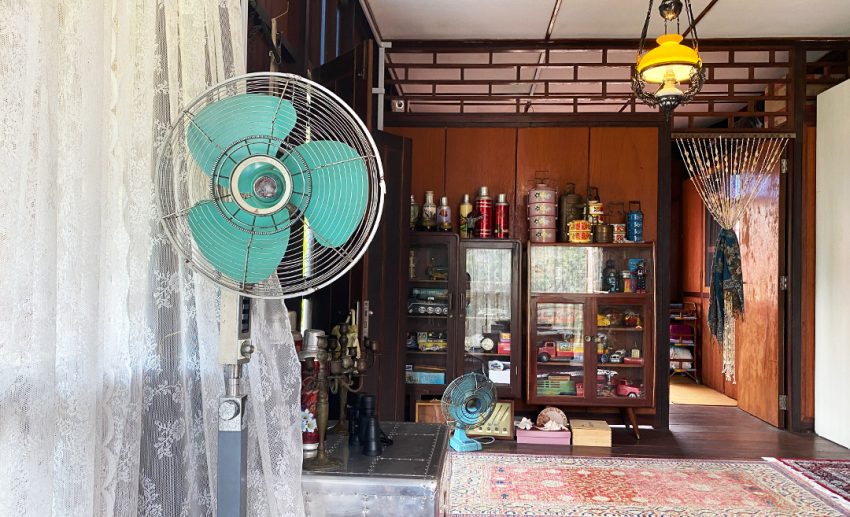 The house, made from solid chengal wood, was built by Nash’s father over 40 years ago. His family lived there until Nash was about 10, and then they relocated to Ipoh. Up until a few years ago, the house remained unoccupied, that is until Nash’s return at the request of his mother to check in on the family home. Being back there pushed him to do some digging about his hometown. Lenggong, as it turns out, has an incredible story, and its rich history, culture, and heritage deserved to be known by more than just the locals. This notion sparked an idea to turn the sleepy town into a tourist destination. With three decades of international hospitality and tourism experience under his belt, Nash set to work.
The house, made from solid chengal wood, was built by Nash’s father over 40 years ago. His family lived there until Nash was about 10, and then they relocated to Ipoh. Up until a few years ago, the house remained unoccupied, that is until Nash’s return at the request of his mother to check in on the family home. Being back there pushed him to do some digging about his hometown. Lenggong, as it turns out, has an incredible story, and its rich history, culture, and heritage deserved to be known by more than just the locals. This notion sparked an idea to turn the sleepy town into a tourist destination. With three decades of international hospitality and tourism experience under his belt, Nash set to work.
He started out by turning his family home into what travel writer Marco Ferrarese would call “Lenggong’s first and only boutique accommodation.” The house was still in great condition, despite the years of unoccupancy, but Nash spruced it up with some modern amenities like an indoor bathroom and air-conditioning for added comfort. Then, he planned a three-day, two-night itinerary for guests that would include the best things Lenggong had to offer. The goal was to give his guests a unique and unforgettable experience, and show the locals that their little town had what it took to captivate the world.
Day 1
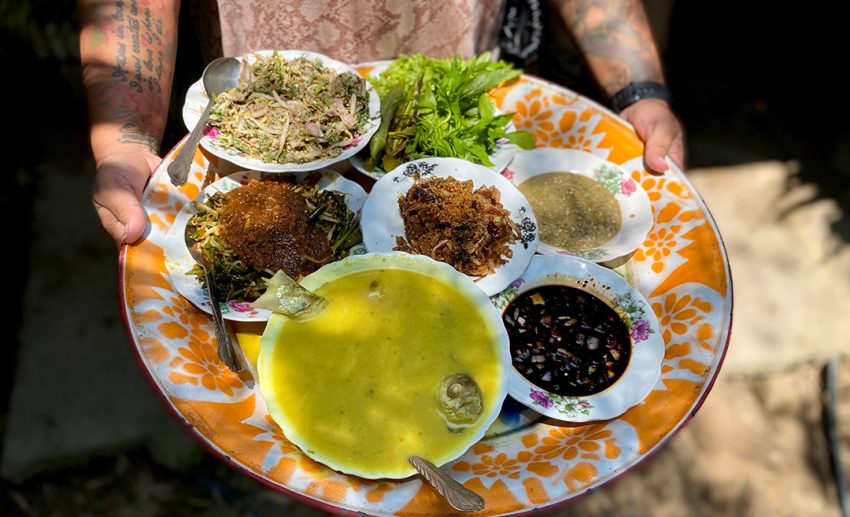
After the introduction, Xin and I freshened up and then got into Nash’s car. He took us to our first stop – a little warung (food stall) for us to experience our first taste of local Malay food. Served on a wooden dais, we were treated to various preparations of locally-grown vegetables and three styles of fish served with rice cooked over a traditional wood fire. While some of the dishes were familiar, others – like pekasam – were completely new to both Xin and me, but we thoroughly enjoyed them. Everything was fresh, organic, and incredibly tasty, giving us no choice but to tambah nasi (meaning to ‘add rice’ and go for extra helpings). Little did we know that this would be the case at all meals throughout our trip.
Fun fact: Pekasam is a Malay delicacy made using freshwater fish (usually loma fish, which is popular and plentiful here in Lenggong) fermented with roasted rice, tamarind, and salt. It is cooked (normally fried) and served as a side in a meal. The loma fish swims upstream (like salmon) to spawn, and its eggs are blue!
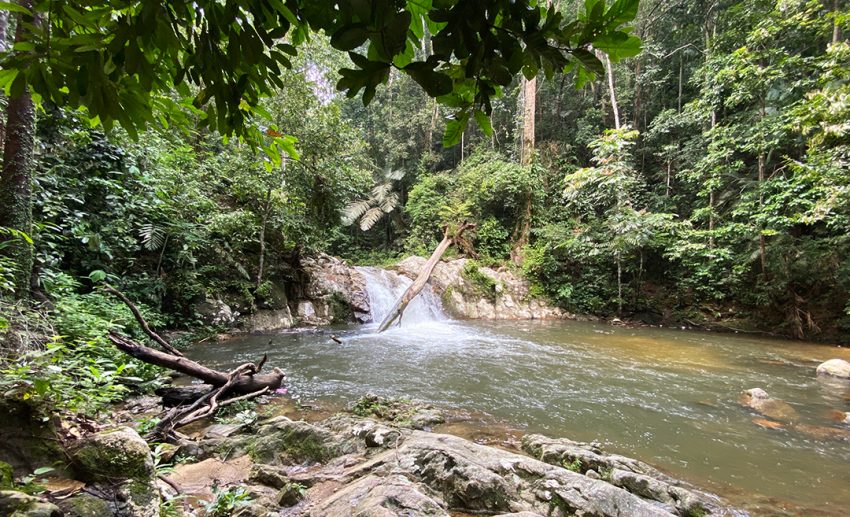
After lunch, we set off to the Lata Kekabu Eco Forest Park. It had rained that morning, so the forest smelled green – lush and fresh. We dipped our feet in the swift-but-shallow river, letting the cold water snap us out of our food coma. A brief trek upstream brought us to a small waterfall. A whirlpool right next to where the water hit gave us an idea of just how strong the current was.
We left after 30 minutes to go to our next stop – a pekasam factory. This ‘factory’ is actually someone’s home in one of the numerous villages in Lenggong, and the ‘manufacturing’ of the pekasam is done in their backyard. Before heading back to Rumah Tiang 16 for the day, Nash took us to a deserted chalet complex overlooking Tasik Raban, where we watched the sunset over the still waters of the lake.
Back at the house, Xin and I washed up, put on the sarongs provided to us as per Nash’s instructions, and went downstairs for dinner. A traditional Malay feast, prepared by neighbouring villagers, greeted us from the wooden dais in the living room of the house. We were served grilled fish, fried fish, ulam (traditional salad of raw, fresh leaves and vegetables eaten with sambal), coconut fish curry, beef cooked in spicy coconut milk, and more pekasam. We enjoyed serving after serving, and pretty soon polished off our plates. We then retired to bed early to get the rest we would need for the following day.
Day 2
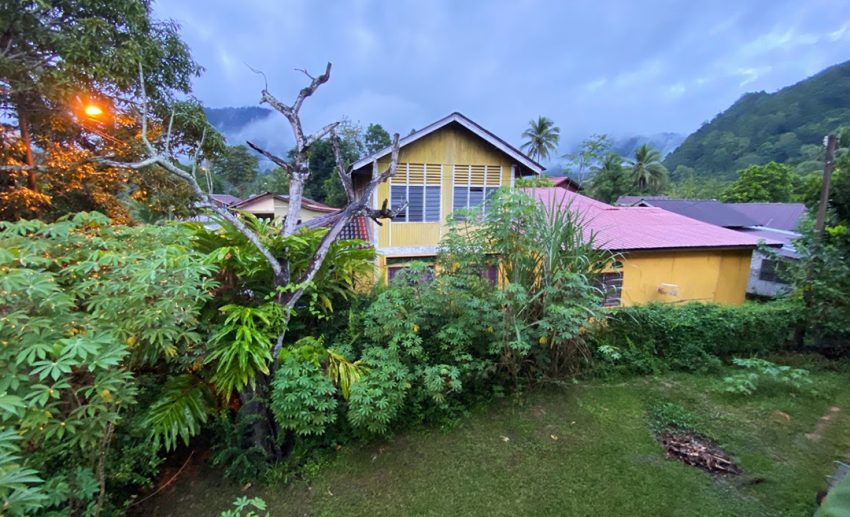
The rooster, chickens, and turkeys that occupy Nash’s yard produced a cacophony of sounds that woke me up around 5am. I tried my best to sleep in a bit more, but to no avail, so I gave up an hour later and started getting ready for the day ahead. I stepped out onto the veranda to take in the cold morning air and caught sight of the thick fog blanketing the hilltops. You couldn’t tell where the fog and grey rain clouds met. It had rained heavily overnight and was still pouring when we left the house in Nash’s car to get breakfast. After a quick meal of nasi lemak, roti canai, and some coffee, Nash drove us around sleepy Lenggong, and up to a hill overlooking the valley. As the clouds made way for the sun, we set off to begin our cave tour.
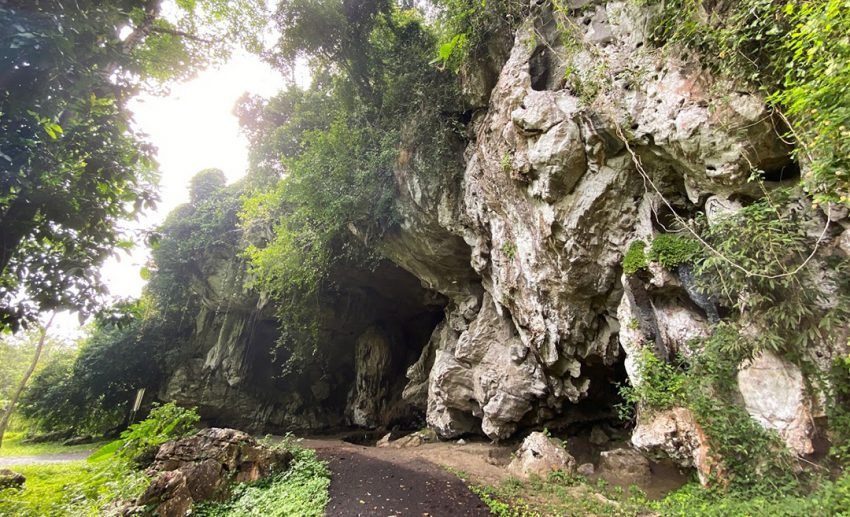
We arrived at the cave complex, consisting of Gua Kajang, Gua Asar, Gua Puteri, Gua Ngaum, and Gua Kelawar. Gua Kajang, the biggest of all the caves was simply awe-inspiring. Nash pointed out two pits at the entrance where archaeologists had found and dug up artefacts dating back to Palaeolithic times. There were drawings on the cave walls, but not cool cavemen drawings like you’d expect; the walls were graffitied with names, declarations of love, and dates from as far back as the 1930s. “I will never understand people’s desire to deface things like this,” I said out loud to Xin and Nash, while trying to decipher the faded scribbles.
The next cave, Gua Asar, required us to descend and squeeze into a small, tight hole that opened up into a larger cavern. From there, we walked a short distance to the next cave, Gua Puteri. To get up to Gua Puteri, we would have had to scale a short rock wall that already had a rope hanging from it. Since it had rained, the wall seemed slippery, so we decided against seeing Gua Puteri and turned back.
Back at the entrance of the cave complex, Nash showed us a little opening on the right that turned out to be another cave, Gua Kelawar. Kelawar means ‘bat’ in Malay, and as the name suggests, it’s filled with bats. Nash and Xin ventured inside while I waited outside because I couldn’t stand the smell (and also didn’t want to risk a bat flying into my face).
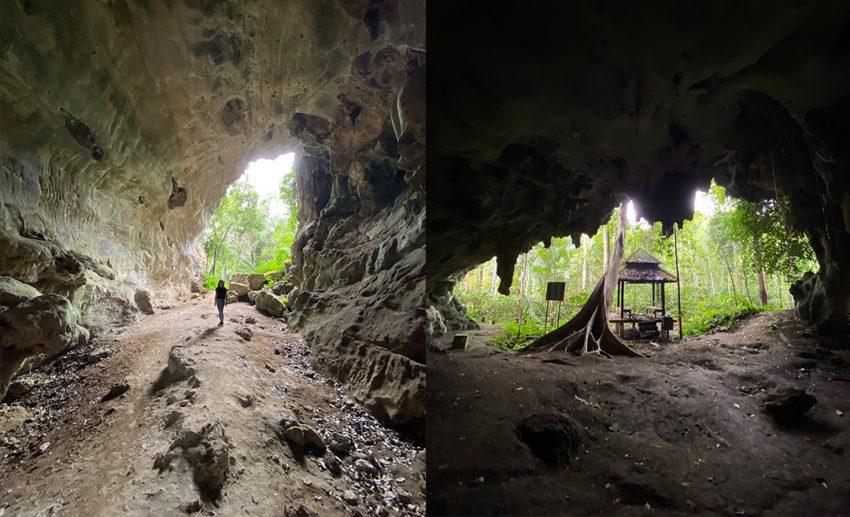
After the cave complex, we stopped briefly at an archaeological dig site where they found a Palaeolithic stone tool workshop. Then, we went back on the road, this time making our way to lunch. On the way, Nash pointed out various landmarks like an old-time wooden truss bridge constructed over the very-wide Perak river, a small padi field, and even an old mosque built by Sultan Muzaffar Shah in 1539.
Fun fact: This 481-year-old mosque was built on a bed of volcanic ash that settled in Lenggong from the Mount Toba eruption 74,000 years ago. This eruption is said to be the largest volcanic eruption in all of human history, and expelled an estimated 2,800 cubic kilometres of ash and lava. Mount Toba, which is in north-central Sumatra, Indonesia, is over 600 kilometres west of Lenggong. The presence of the volcanic ash in Lenggong has helped archaeologists date their various findings in the area.
We reached our lunch destination to find out that we would be dining in a dangau, or a thatch roof hut, in the middle of an orchard. The home and orchard belonged to Mak Ani, who also prepared our lunch. As we settled in the dangau, Mak Ani and her friend Mak Lang grated coconut and pounded fresh chillies and onions to prepare fresh sambal for us.
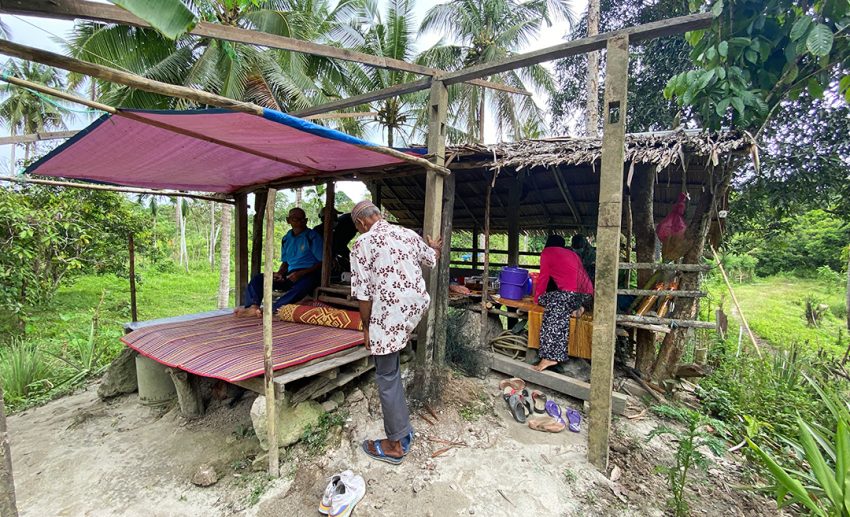
The rest of the menu consisted of numerous vegetables, some of which Xin and I had never ever heard of or even seen. There was a green yam that looked like cucumber but tasted like jambu air (water apples), and a yellow root from the ginger family that tasted like young mango. There was a blanched fern, jering (a type of seed from a flowering tree in the pea family) sambal, fried egg, loma fish egg omelette, and of course, another serving of pekasam.
Dessert was sago served in coconut milk with palm sugar. This sago, too, was freshly made by Mak Ani whose husband harvests the sago palm trees nearby their home. All the produce served to us was freshly harvested, fully organic, and pesticide-free. I had never had a meal that was simultaneously so fresh, so clean, and so satisfying.
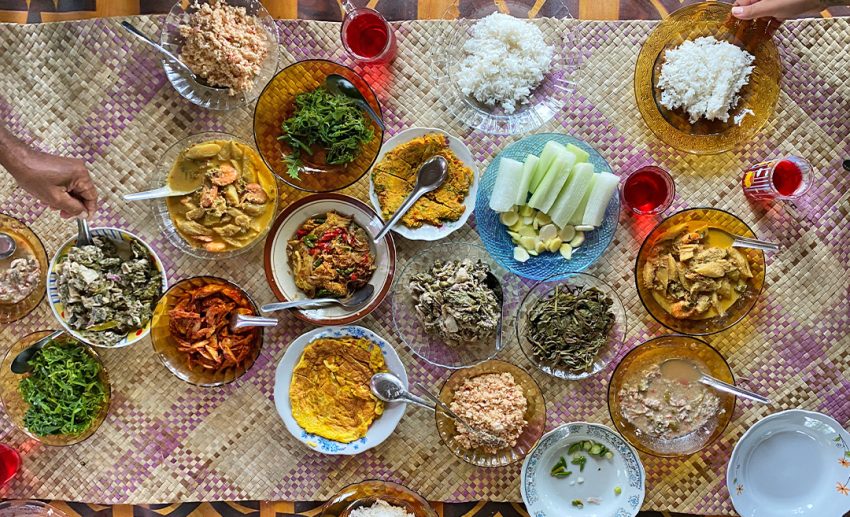
Once we were done with our meal, Mak Lang gave us a mengkuang (screwpine) mat weaving demonstration. She let Xin and I try our hand at it, but obviously, we weren’t as swift and skilful as her with all her years of practice. She was very encouraging nonetheless.
Upon leaving Mak Ani’s, Nash took Xin and me to Bukit Bunuh. He said he had a surprise to show us, which I joked sounded daunting considering that Bukit Bunuh translates to ‘Kill Hill’. Driving on a rough and muddy terrain lined by rows and rows of oil palm trees, Nash started talking about a meteorite that hit earth 1.83 million years ago. He told us about suevite – a metamorphic rock – that formed as a result of the meteorite impact, and as soon as his story ended, he pulled over in an open space peppered with boulders. This, Nash said, was the site of the meteorite impact he was telling us about, and those boulders coming out from the earth were suevite rocks themselves.
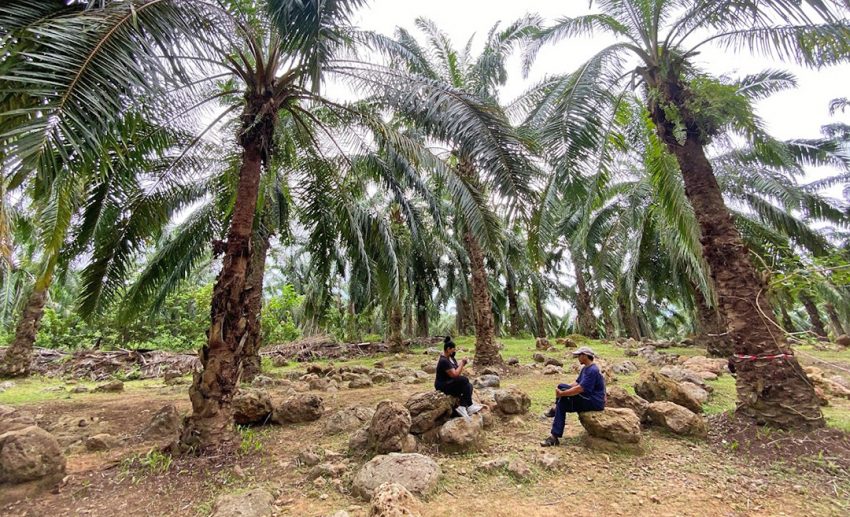
Fun fact: There are only 27 suevite rock sites in the world, and the one in Lenggong – also a UNESCO World Heritage site – is the only one of its kind in the whole of Asia. Even more astounding, geologists studying the site found a hand axe embedded in one of the suevite boulders, basically alluding that there was an early man dwelling in this area prior to the meteorite impact 1.83 million years ago. Mind: Blown!
Our next stop was the Lenggong Archeological Museum, home to various artefacts found in Lenggong – including the hand axe embedded in the suevite rock – as well as the skeletal remains of a man said to have lived about 11,000 years ago in the Lenggong Valley. These remains, were discovered in 1991 in a cave just a few kilometres north of Lenggong town. This is the oldest human skeleton found in Peninsular Malaysia, and has been christened ‘Perak Man’.
We decided to call it a day and headed back to Rumah Tiang 16 to rest up before dinner. That night’s feast was prepared by the family of the boatman who would be taking us on a backwater tour the next morning. Alongside another serving of pekasam, we had grilled fish head, fish cooked in tempoyak (fermented durian), and more fresh, organic veggies. After dinner, we tucked into bed to rest up for what would be our last day in Lenggong.
Day 3
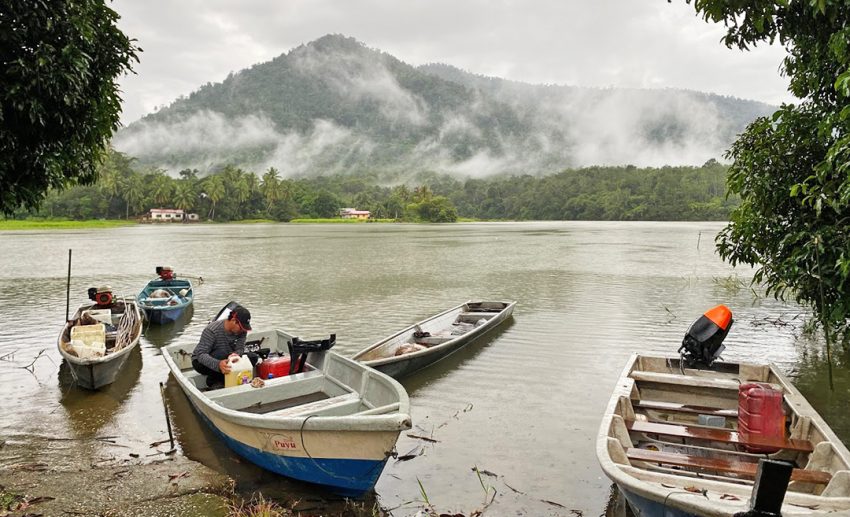
Our final morning in Lenggong started like the previous one – rainy with farm birds clucking, crowing, and gobbling away at the break of dawn. Xin and I awoke a little after 6am, well-rested, and got ready to set out at 7am for our backwater cruise down the Perak River. Nash drove us to the boatman’s house, and from there, we got into his sampan waiting on the river bank just 50 feet from his front door. The rainy morning formed fog that clouded the hilltops lining the river. Nash told us that if we had come any earlier, we would have been boating through the fog on the water.
A 10-minute boat ride downstream brought us to a teeny tiny riverside village. I say teeny tiny because there were all of 20 houses there. Here, we had a delicious breakfast prepared by the boatman’s wife. The spread included nasi lemak (best I’ve had in the longest time), fried eggs, tuna sandwiches, curry puffs, tapioca balls stuffed with grated coconut and palm sugar, fried rice, and once again, a small breakfast serving of pekasam.
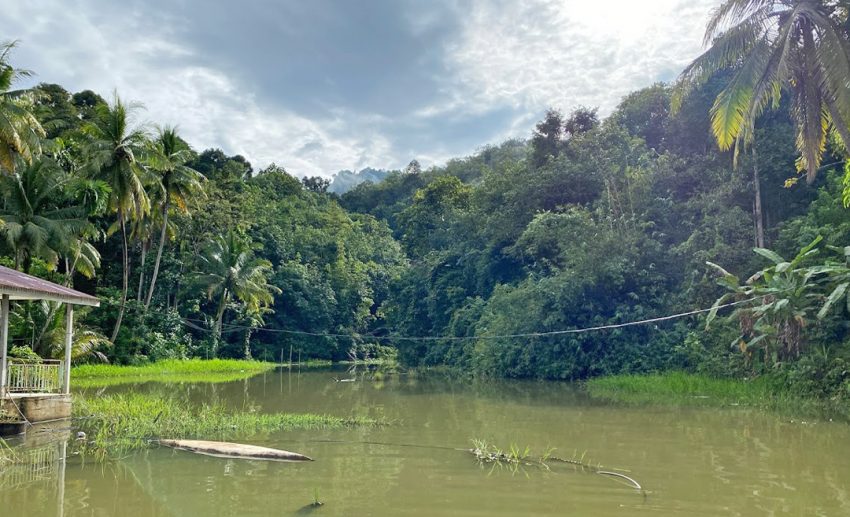
As the sun came out to play, the view of the river with the jungle behind it looked like something out of the Anaconda movies. It was incredibly serene with the only sounds coming from the birds in the jungle trees, and the river water lapping against the bank. We got back into the boat, and started our cruise properly. For about an hour and a half, the boatman took us down the river, through little waterways and canals. I half-hoped we’d spot a crocodile or two, but Nash was quick to tell me that crocodiles didn’t live this far upstream. I was slightly disappointed but also relieved because the sampan was a bit too small to handle any excitement from a crocodile sighting. We sailed our way to the underside of the Raja Muda Nazrin Bridge. Nash and the boatman told us about the impressive acoustics here, and I tested it out with a quick belt of a song. They weren’t lying!
The bridge marked the halfway mark of our boat ride, and before turning around to head back, we glided through a lotus flower patch in the water. The return trip relaxed me entirely – the sun was blazing, there wasn’t a cloud in sight, and the rush of the fresh air in my face emptied my mind completely; there wasn’t a single thought in my head – truly an amazing feeling.
We returned to Rumah Tiang 16 for the last time to pack and get ready to leave back to Kuala Lumpur. Before our departure, Nash had one last experience for us – making bedak sejuk or cold powder. This is a traditional Malay beauty treatment used by women for generations to beautify and cool the skin. It’s said to clear blemishes and even out skin tone. Made only with rice, it takes 12 months of soaking white rice in water which is changed every two weeks to prevent rotting.
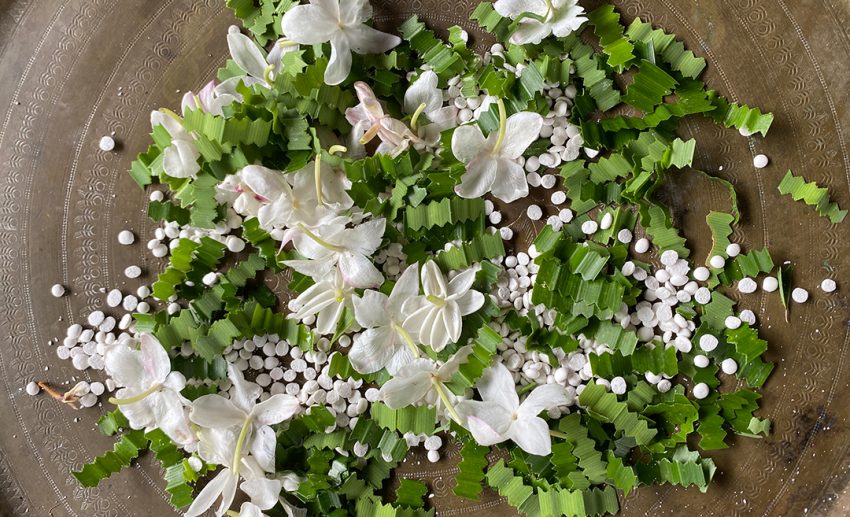
After 12 months, the rice becomes a paste, which is then poured into a funnelled leaf to be dropped onto a piece of fabric. The fabric helps absorb excess moisture and dry the droplets faster. Once dry, the droplets are removed from the fabric, and placed on a tray with flowers like jasmine or rose, and pandan leaves to help give it a fragrance while it dries some more. The finished product is then stored in airtight containers. To use, simply take three or four droplets, add a tiny bit of water to form a paste, then apply it to your face and leave on for as long as you like. Usually, the women leave the bedak sejuk on overnight.
Once we were finished with making the bedak sejuk, Xin and I loaded up the car with our belongings and thanked Nash for an amazing trip. Neither one of us expected our three days in Lenggong to be that exciting, but we were very grateful to him for giving us the opportunity to experience it. Now, we’re recommending it to everyone we know because there’s really nothing like it. Lenggong and Rumah Tiang 16 is truly a unique and unforgettable experience that everybody should have.
Find more information on Rumah Tiang 16 here.
Follow Zafigo on Instagram, Facebook, and Twitter. Sign up to our bi-weekly newsletter and get your dose of travel tales, tips, updates, and inspiration to fuel your next adventure!
